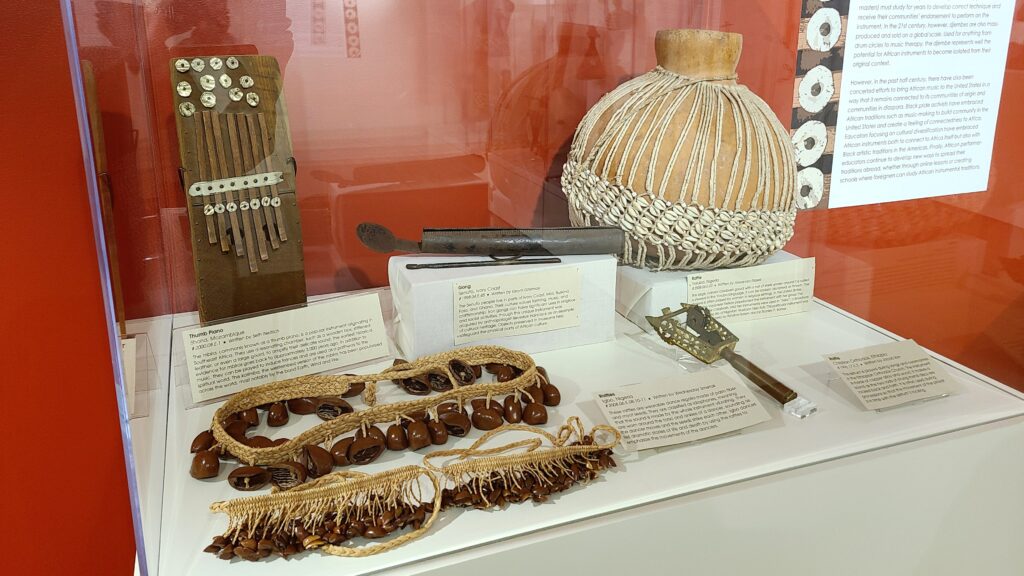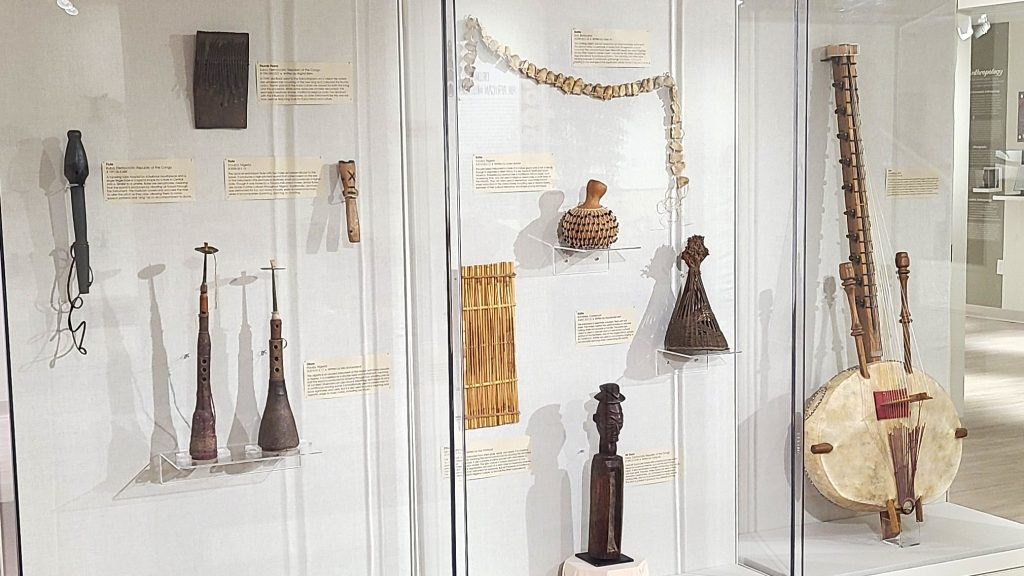Drums: An African Musical Icon
It is no accident that drums and drum families—drums of similar construction, but different sizes and pitches—have come to symbolize African music-making on a global scale. Their exact roles may vary, but different types of drums traditionally play integral roles in African social life. Drums create the rhythmic fabrics necessary to support religious, healing, and agricultural rituals. They usher newborns into life and mark the passing of the dead. Royal drums served to enshrine and celebrate the power of kings; even where kingships were replaced by nation-states, the drums serve as a potent symbol of ethnic identity. Though drums can be played by themselves, African drumming traditions frequently support dancing, the dancers’ feet stepping in time across complex polyrhythms played by multiple drummers coordinating different rhythms at once.
Enslaved people arriving in the Americas carried drumming knowledge with them. Though drums had and continue to be used to “talk” in West Africa, drums as a form of communication sparked fear among slaveholders; by the end of the 19th century, skin headed drums were banned in locations across North America and the Caribbean. The traditions could not be fully stamped out, however; African-derived drumming traditions in Cuba, for example, not only flourished in religious contexts, but went on to influence prominent Latin musics of the 20th century, including cha cha, mambo, and salsa. The global rise in popularity of individual African popular music traditions as well as pan-African popular music genres, such as Afrobeat in the late 20th century and Afrobeats in the early 21st, also has propelled African instruments in general but drums specifically into the global consciousness.
Explore the Objects in this Section
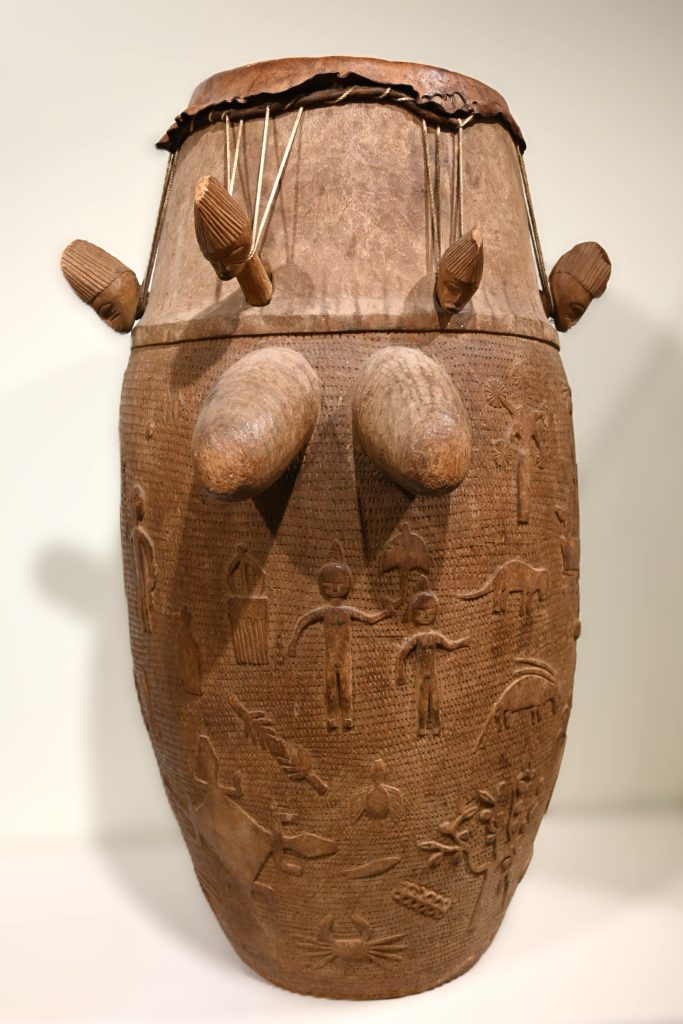
Drum
Asante, Ghana
#1987.01.E.08 ● Written by Ranya Maadir
This “mother drum,” a treasure of the Asante people in Ghana, is covered with carvings that illustrate the culture’s traditions and beliefs. Some carvings show scenes such as an important chief beneath a parasol, and some are adinkra symbols such as the crossed crocodiles representing unity. Traditionally, the drum is the focal point of healing ceremonies and gatherings strengthening the community’s spirituality.
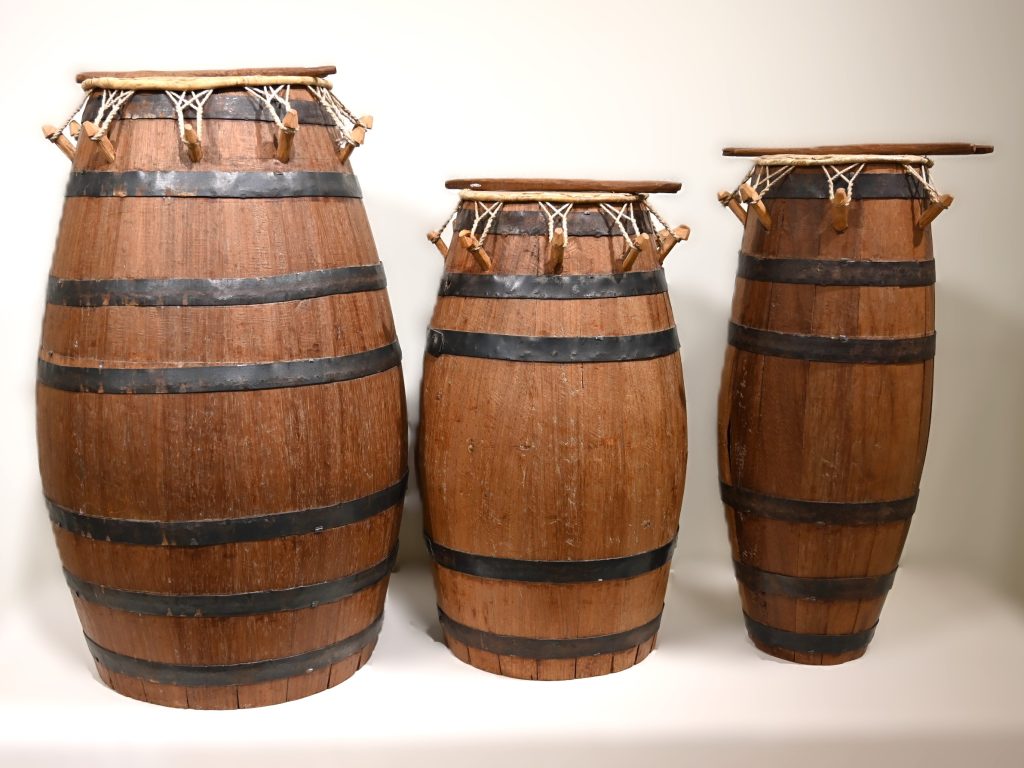
Drums
Ewe, Ghana
#1992.06.E.087-089 ● Written by Gina Ortiz
This type of drum originated in the mid-twentieth century with the Ewe people. It is made of wood slats that are joined by a metal ring like a barrel. The drumhead is made of string and skin is similar to older drum types. Ewe people play these drums during religious ceremonies such as Agbadza, dances like Adgozbo, and more. Collector Joan Kapfer donated this set to the Lam Museum in 1992.
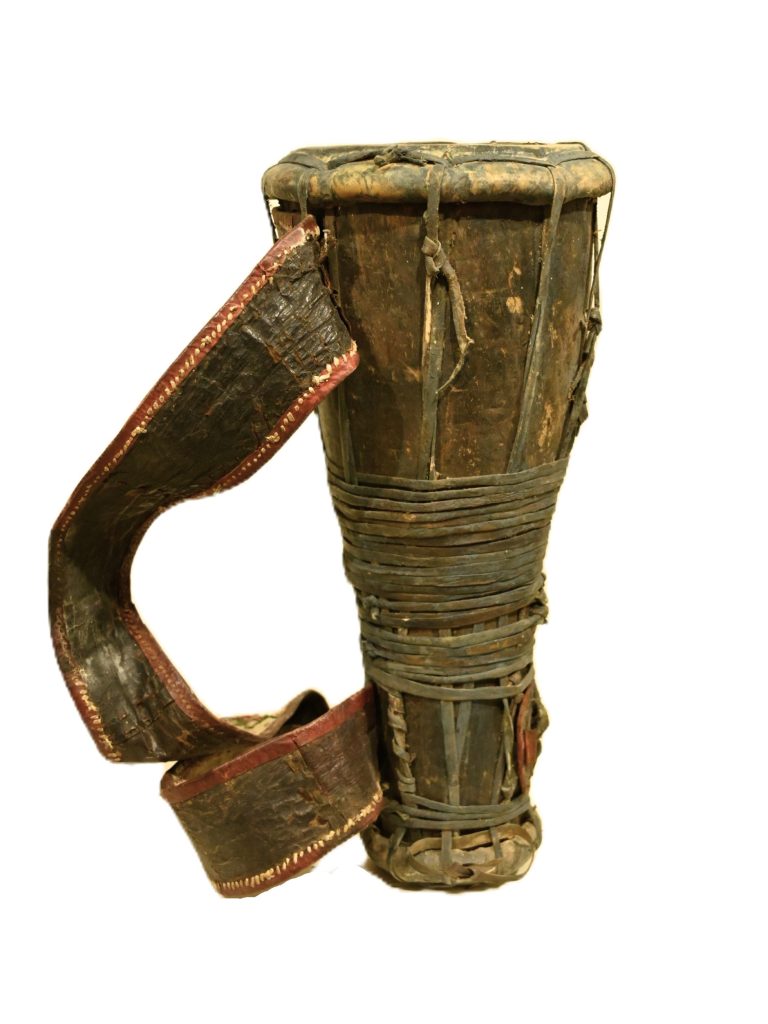
Drum
Yoruba, Nigeria
#2009.03.E.09 ● Written by Shea Vandermeid
The bata drum is the lead drum in many ceremonies consecrated to the Yoruba orisha, or deity, Shango. The drum’s central section is wrapped in leather stained with blue indigo. The red accents show Shango’s sacred color. Like all drums, the bata is a membranophone percussion instrument, but it is somewhat unique because it is double-headed.
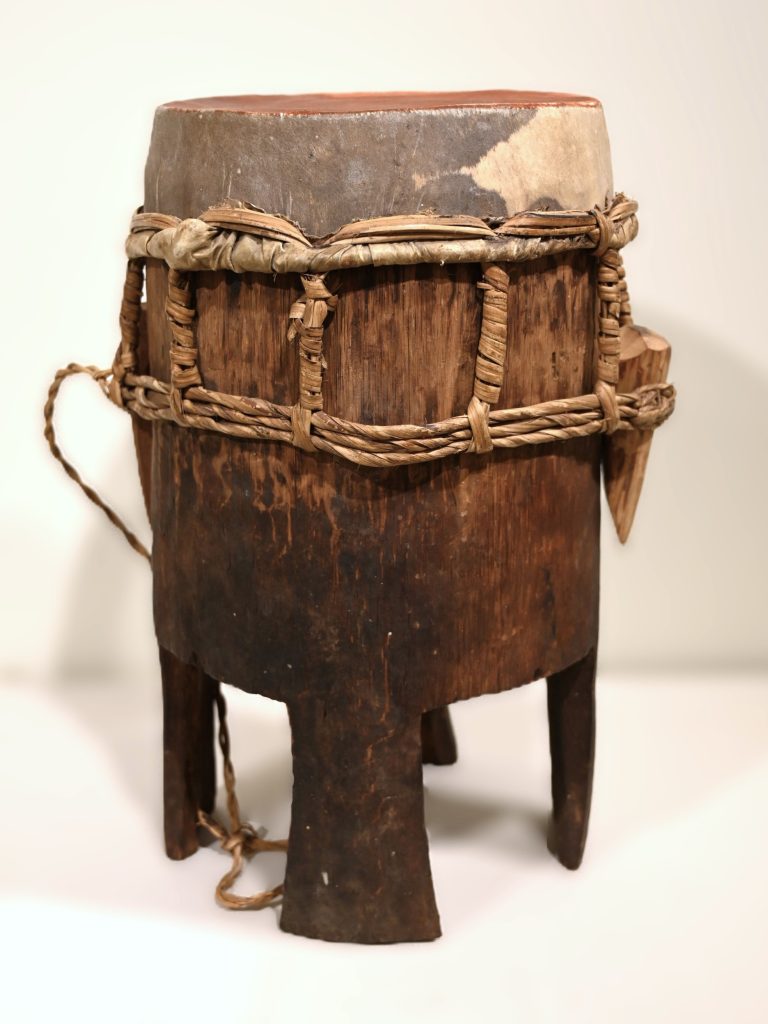
Drum
Yoruba, Nigeria
#2003.07.E.04 ● Written by Candace Hiruy
Gbedu is a type of drum made out of a tree trunk, an animal hide, and leather strips. The drum makes a deep sound often intentionally dampened by pressing the beaters against the drumhead. The Gbedu drum is an emblematic instrument for the Owu Yoruba people as it has been played for the royal family for almost 200 years.
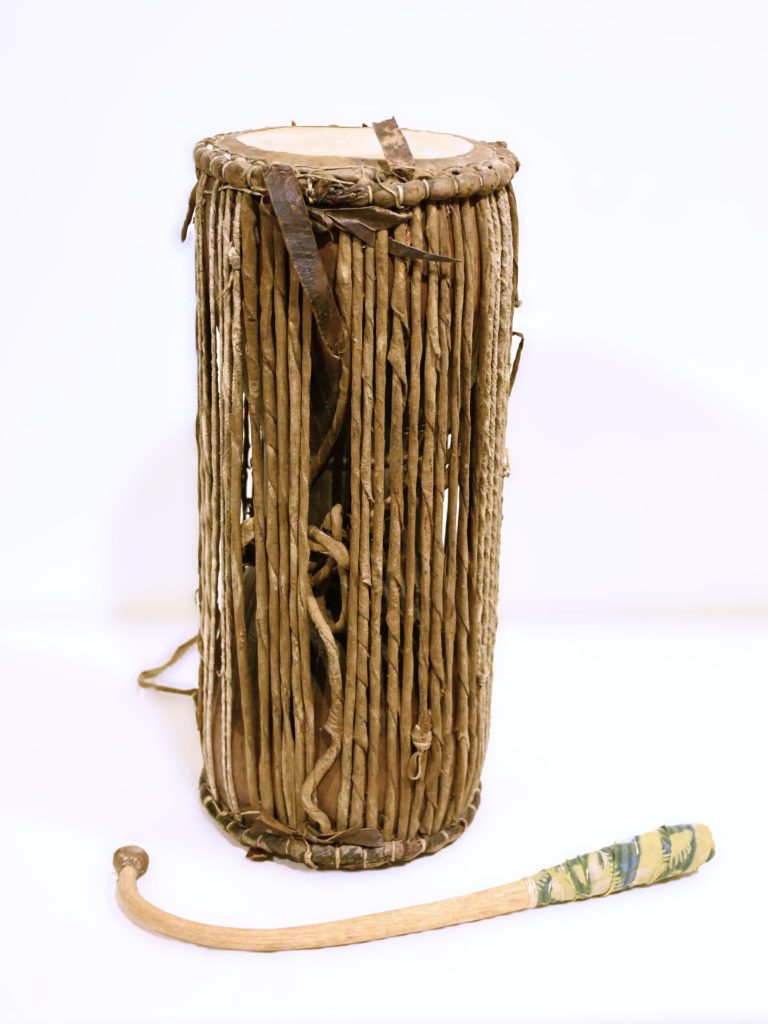
Drum
Yoruba, Nigeria
#2008.06.E.23 ● Written by Ryan Olivia Swilling
The talking drum is originated in West Africa and is found in many cultures. In the Yoruba language, it is called dundun. The drum is composed of wood, leather, fabric, and cowhide. Its beater has a distinct L-shape. This is so the drummer can squeeze the drum under their arm to change the pitch as they tighten or loosen the drumhead bindings.
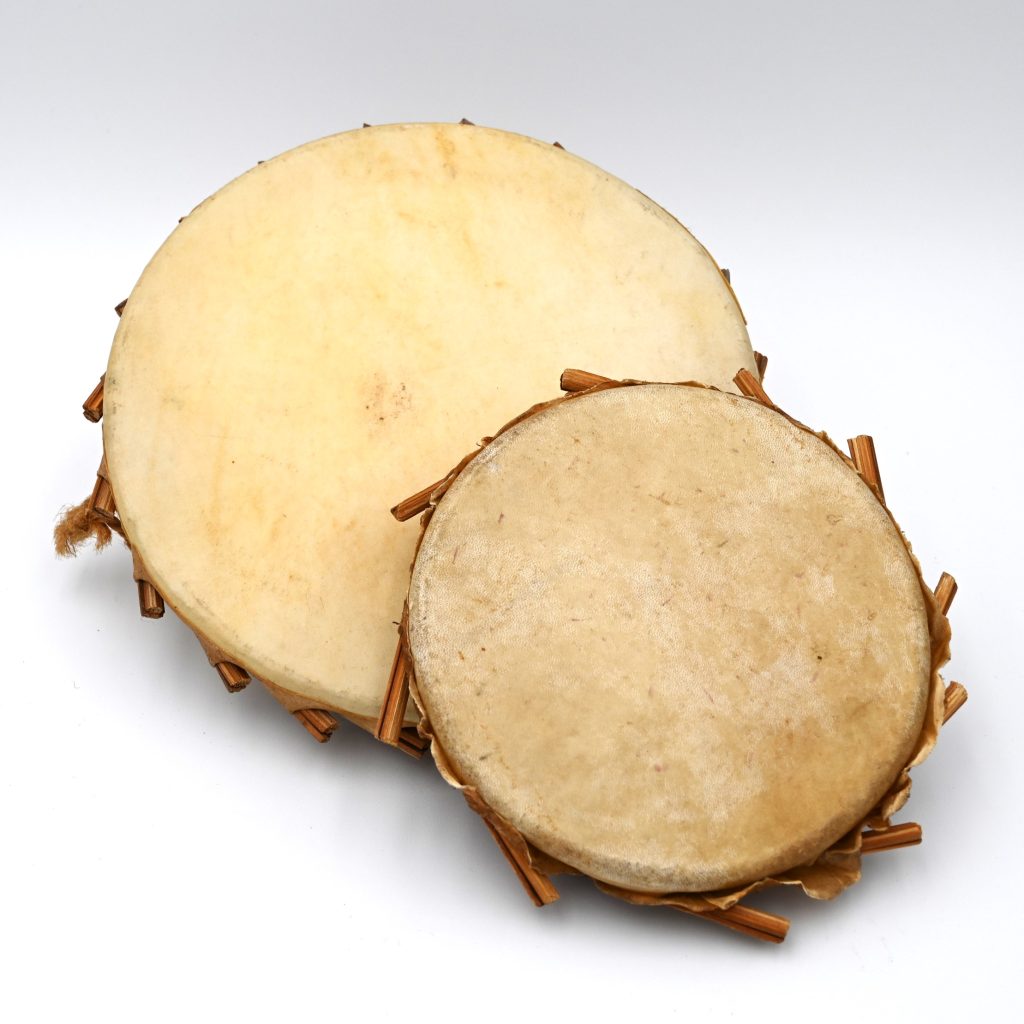
Drums
Hausa, Nigeria
#2008.06.E.18-19 ● Written by Isabela Meeker
These drumheads were once part of talking drums. This instrument imitates human speech through changes in pitch and rhythm. Historically, they served as nonverbal communication tools across large distances. Today, they’re used in spirituality, worship, heritage performances, civic ceremonies, and secular celebrations. Talking drums are a good symbol for West African music, because music is integral in strengthening familial and societal ties.
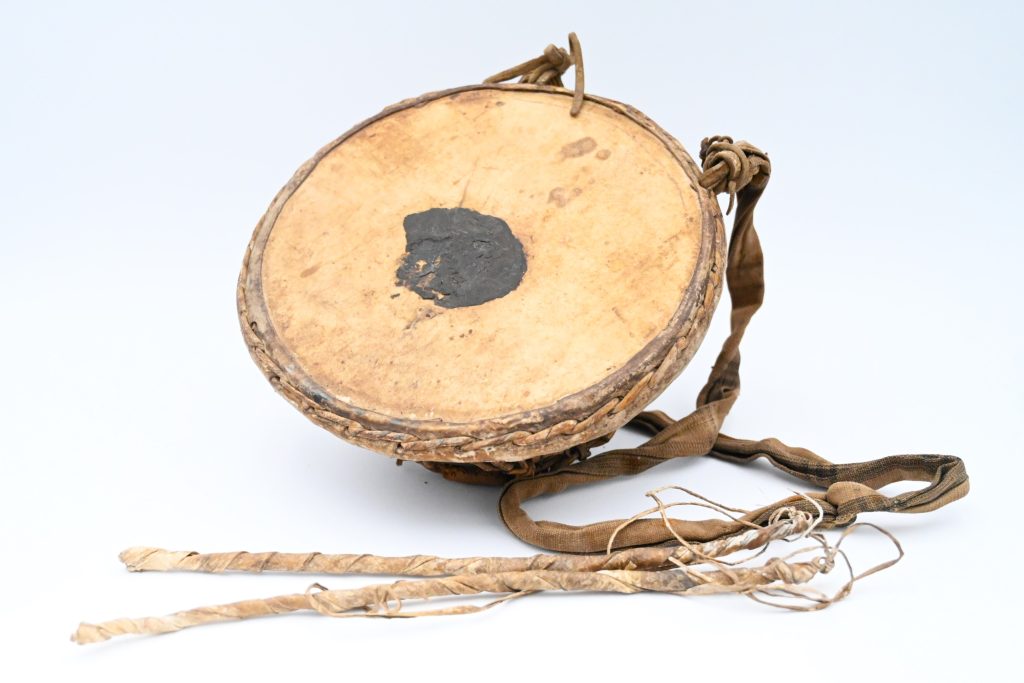
Drum
Yoruba, Nigeria
#2008.06.E.20 ● Written by PJ McPherson
Gudugudu is a type of drum called a membranophone, meaning the sound is produced by a striking a stretched covering. Gudugudu are played with rawhide beaters on a goatskin membrane. It is played in the Yoruba dundun ensemble where it can represent the spirit of Ayangalu, the patriarch of the Ayan family of drummers.


